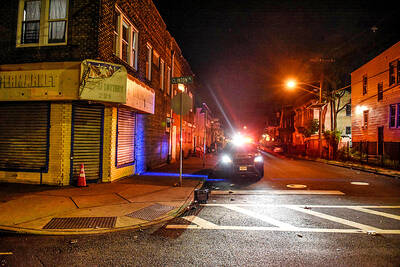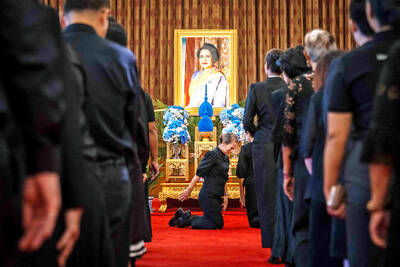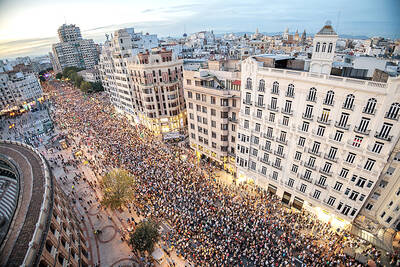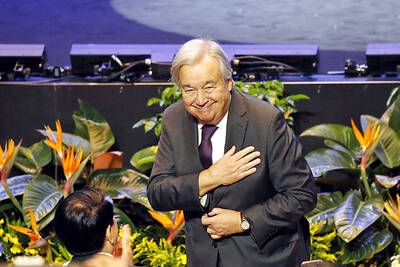Isaac Newton held a clear glass prism to the sunbeam that penetrated the shutters of his darkened room and watched in awe as the wall of his office danced with all the colors of the rainbow.
The 28-year-old physicist at Trinity College, Cambridge, was the first to show that white light is a blend of primary colors, a discovery that explains why grass is green and the sky is blue.
His written account of the experiment in 1671 is among the oldest in a collection of scientific milestones described in “Letters to the Royal Society,” which were made public yesterday to celebrate the 350th anniversary of Britain’s academy of science. The documents were released through an online library project called “Trailblazing,” a name inspired by Newton’s famous nod to the work of his predecessors in a note to his rival Robert Hooke: “If I have seen a little further, it is by standing on the shoulders of giants.”
The letters to the society record the march of science from the earliest blood transfusions and attempts to capture lightning, to the confirmation of Albert Einstein’s theory of relativity, the discovery of DNA and Stephen Hawking’s first musings on black holes.
“At that time, the only scientists who were in any sense professionals were astronomers and maybe medical doctors, and of the two, the astronomers were the only ones who probably did more good than harm,” said professor Martin Rees, astronomer royal and president of the society. “If you look at these records, you can’t help but notice the immense range of interests they had. They were motivated by curiosity.”
There is the letter from the chemist Robert Boyle, asking the physician Richard Lower about the consequences of transfusing blood from one animal into another. Does a dog lose its quirks after transfusion and gain those of the donor? Does blood from a big dog make a small dog grow? Can you safely replace a frog’s blood with blood from a calf and might that change one species into another? The answers were no, no, no and no.
That did not stop Lower moving on to human experiments, paying an “addle-brained” man 20 shillings to receive blood from a lamb. There were hopes it might cure the man’s mental condition, but when Samuel Pepys, a president of the society, questioned the physician afterwards, Lower noted that his subject was still “a little cracked in the head.”
A letter from Benjamin Franklin from 1752 dispels the myth that lightning is a supernatural force. He recounts an experiment that he was lucky to survive, involving a thunderstorm and a kite armed with a long metal spike.
On witnessing the Montgolfier brothers’ hot air balloon flight, Franklin declared such a device might be strapped to one’s errand boy, so he could hop over hedges more swiftly as he ran from house to house. Or it could carry wine to great altitude and keep it cool.
In 1769, the English naturalist Daines Barrington wrote to the society after a barrage of tests confirmed that Wolfgang Amadeus Mozart was indeed a child genius. Barrington visited the eight-year-old at his parents’ home and asked him to play scores he had never seen, and to compose on the spot.
“His execution was amazing, considering his little fingers could scarcely reach a fifth on the harpsichord,” Barrington wrote on hearing one recital.
He vouched for Mozart’s age by confirming birth certificate details and documenting his behavior.
“Whilst he was playing to me, a favorite cat came in, upon which he immediately left his harpsichord, nor could we bring him back for a considerable time,” he wrote.
After a safe return to Britain aboard HMS Resolution, Captain James Cook wrote to the Royal Society in 1776 to disclose how he saved his crew from scurvy by filling the hold with “sweet-wort,” sauerkraut, lemons and vegetables.
One sailor died of an unrelated disease.
“Two others were unfortunately drowned and one killed by a fall; so of the whole number with which I set out from England, I lost only four,” Cook wrote.
To mark the anniversary, the society is calling leading researchers together to thrash out the biggest issues for modern science. Feeding the world and providing clean, green energy will doubtless feature, as will more basic questions on the nature of ageing and consciousness.
“Our world is completely transformed through the application of scientific concepts which could not even be conceived of at the time the society was founded,” Rees said. “New questions come into focus as old ones are answered. The important thing about science is it’s an unending quest.”

DOUBLE-MURDER CASE: The officer told the dispatcher he would check the locations of the callers, but instead headed to a pizzeria, remaining there for about an hour A New Jersey officer has been charged with misconduct after prosecutors said he did not quickly respond to and properly investigate reports of a shooting that turned out to be a double murder, instead allegedly stopping at an ATM and pizzeria. Franklin Township Police Sergeant Kevin Bollaro was the on-duty officer on the evening of Aug. 1, when police received 911 calls reporting gunshots and screaming in Pittstown, about 96km from Manhattan in central New Jersey, Hunterdon County Prosecutor Renee Robeson’s office said. However, rather than responding immediately, prosecutors said GPS data and surveillance video showed Bollaro drove about 3km

‘MOTHER’ OF THAILAND: In her glamorous heyday in the 1960s, former Thai queen Sirikit mingled with US presidents and superstars such as Elvis Presley The year-long funeral ceremony of former Thai queen Sirikit started yesterday, with grieving royalists set to salute the procession bringing her body to lie in state at Bangkok’s Grand Palace. Members of the royal family are venerated in Thailand, treated by many as semi-divine figures, and lavished with glowing media coverage and gold-adorned portraits hanging in public spaces and private homes nationwide. Sirikit, the mother of Thai King Vajiralongkorn and widow of the nation’s longest-reigning monarch, died late on Friday at the age of 93. Black-and-white tributes to the royal matriarch are being beamed onto towering digital advertizing billboards, on

Tens of thousands of people on Saturday took to the streets of Spain’s eastern city of Valencia to mark the first anniversary of floods that killed 229 people and to denounce the handling of the disaster. Demonstrators, many carrying photos of the victims, called on regional government head Carlos Mazon to resign over what they said was the slow response to one of Europe’s deadliest natural disasters in decades. “People are still really angry,” said Rosa Cerros, a 42-year-old government worker who took part with her husband and two young daughters. “Why weren’t people evacuated? Its incomprehensible,” she said. Mazon’s

POWER ABUSE WORRY: Some people warned that the broad language of the treaty could lead to overreach by authorities and enable the repression of government critics Countries signed their first UN treaty targeting cybercrime in Hanoi yesterday, despite opposition from an unlikely band of tech companies and rights groups warning of expanded state surveillance. The new global legal framework aims to bolster international cooperation to fight digital crimes, from child pornography to transnational cyberscams and money laundering. More than 60 countries signed the declaration, which means it would go into force once ratified by those states. UN Secretary-General Antonio Guterres described the signing as an “important milestone,” and that it was “only the beginning.” “Every day, sophisticated scams destroy families, steal migrants and drain billions of dollars from our economy...